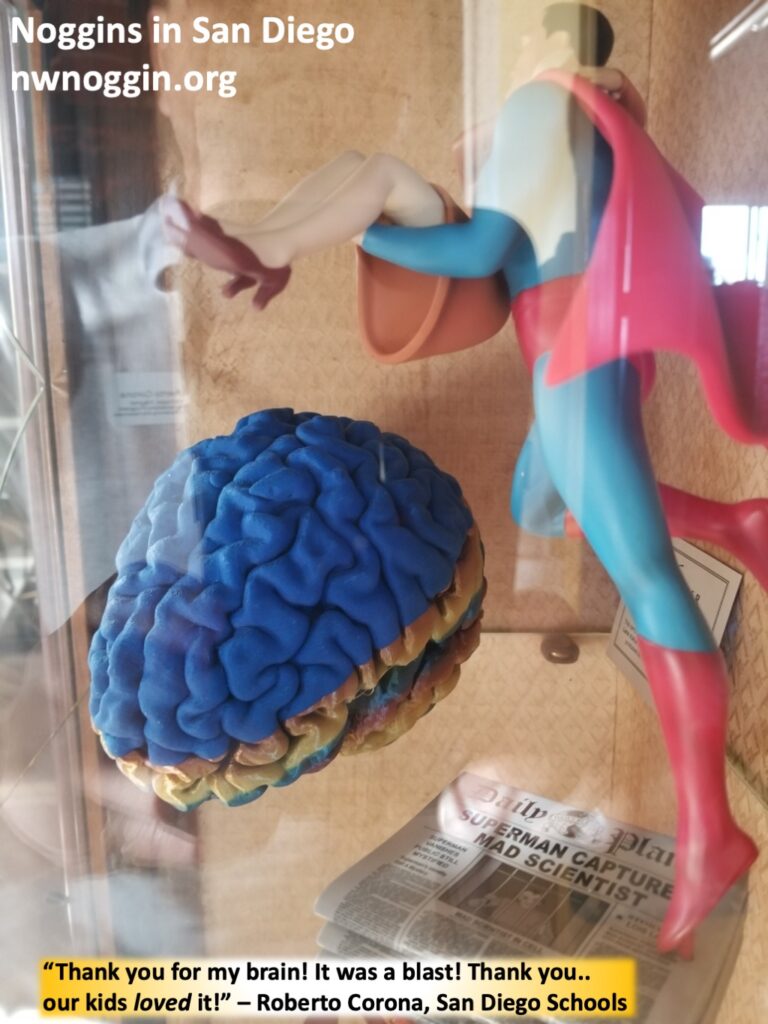The last time we traveled to San Diego for the annual Society for Neuroscience conference, we gave the 2018 keynote address on brain awareness, and joined a panel discussion on neuroscience outreach. We heard from representatives of resource-rich institutions who talked about their well-staffed offices, expert-judged Brain Bees and annual Brain Fairs.
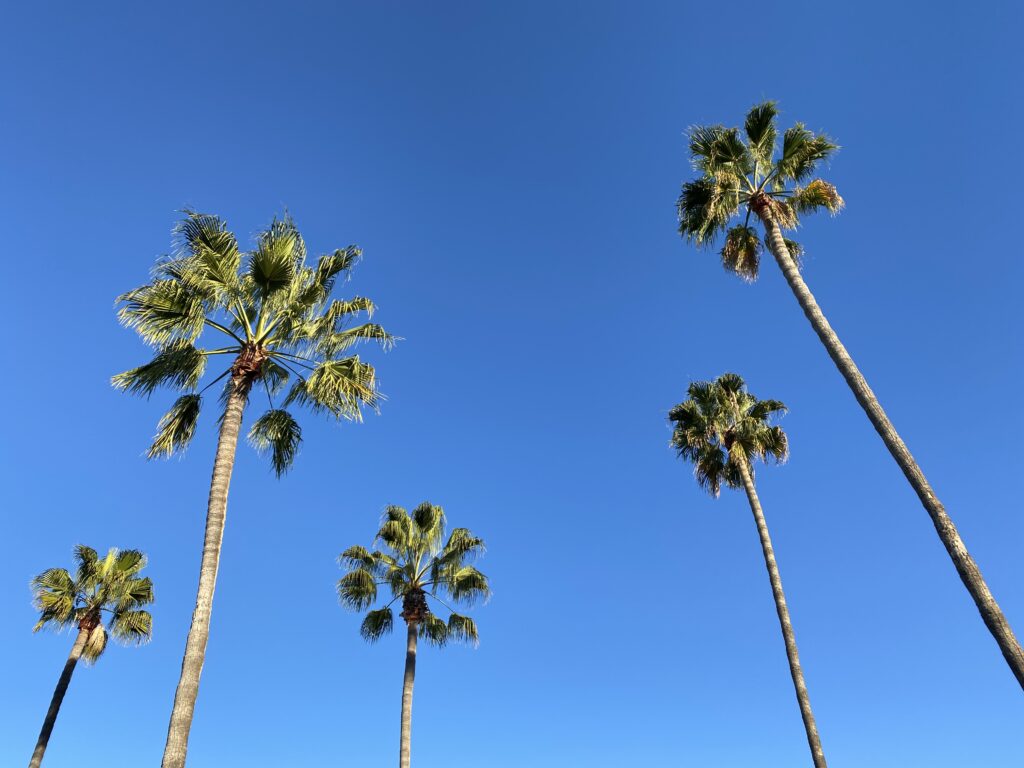
LEARN MORE: Synapsing in San Diego @ SfN!
LEARN MORE: Action & Potential in Outreach, Education and Research
LEARN MORE: Thankful for brains
When it was our turn, we described the more than 70 all-volunteer visits we’d made that year to public schools, correctional facilities and shelters for houseless youth with our undergraduate and NIH-funded graduate volunteers, real noggins and sciart projects, using inexpensive materials and centering the questions, stories and interests of those we met.
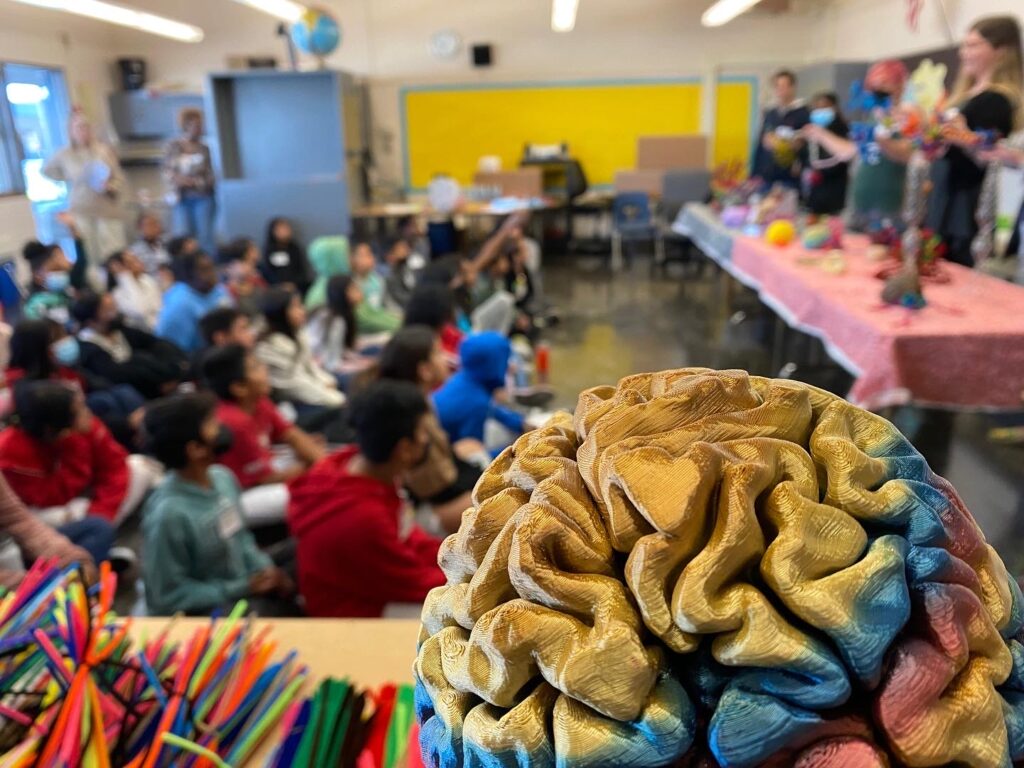
LEARN MORE: Noggin Bloggin
We also invited everyone to join us that week in K-12 classrooms, where we’d arranged, through prior discussions with teachers and San Diego Unified school district staff, for two exciting days of direct, exuberant public engagement over neuroscience research and art!

LEARN MORE: Noggins & Noodles @ SfN!
We are fascinated by the money spent by government agencies and private foundations aimed at increasing diversity, equity, inclusion and interdisciplinary approaches in both education and research – much of which continues to flow towards many of the same privileged universities and private schools, and the same institutional systems, that have typically received funding in the past.
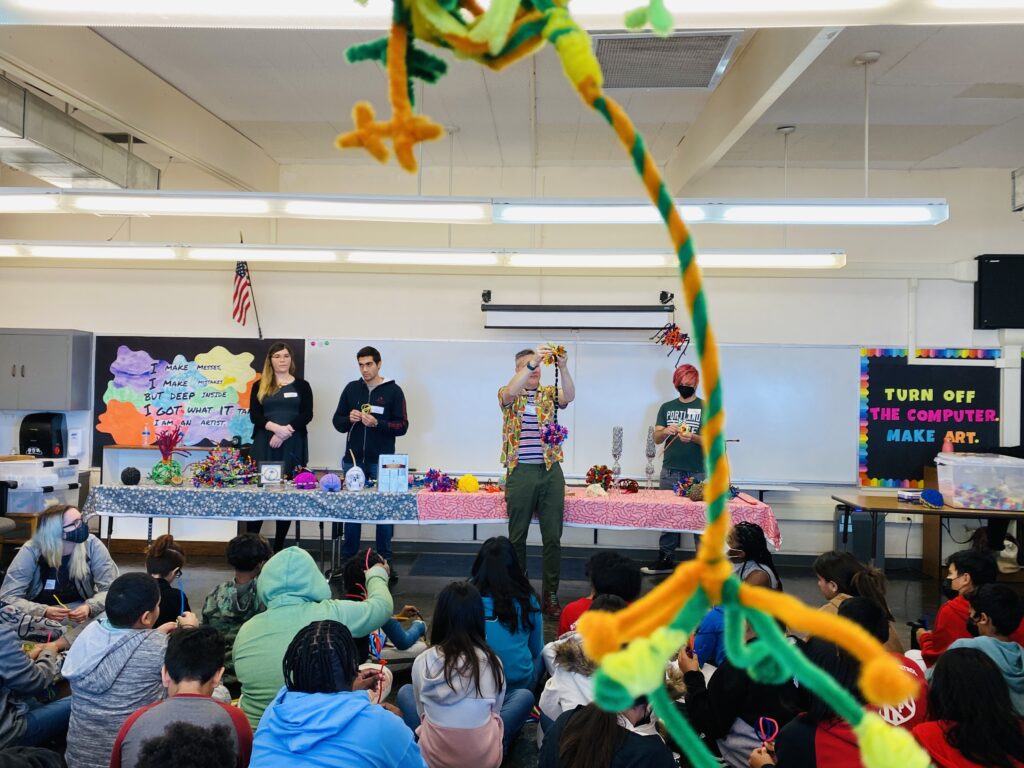
“…respondents noted a lack of tangible actions to address the historical, societal, institutional, organizational, and governmental structures that influence disparities within the biomedical workforce as barriers. Specific actions are needed to change those existing structures to dismantle systemic racism.”
— Courtney F. Aklin, Ph.D., Mia Rochelle Lowden, Ph.D., Monica Webb Hooper, Ph.D., UNITE Committee Co-Chairs, National institutes of Health
LEARN MORE: Listen. Learn. Act.
LEARN MORE: Inequalities in the Distribution of NIH Research Project Grant Funding
LEARN MORE: Racial inequity in grant funding from the US National Institutes of Health
LEARN MORE: Less prestigious institutions deliver better value for grant money

That is definitely not our thing, so while we may miss the big structurally segregated dollars, we enjoy the tremendous privilege of going places and hearing directly from those not currently overrepresented in neuroscience, and both inspiring and being powerfully inspired by their questions, insights and art.
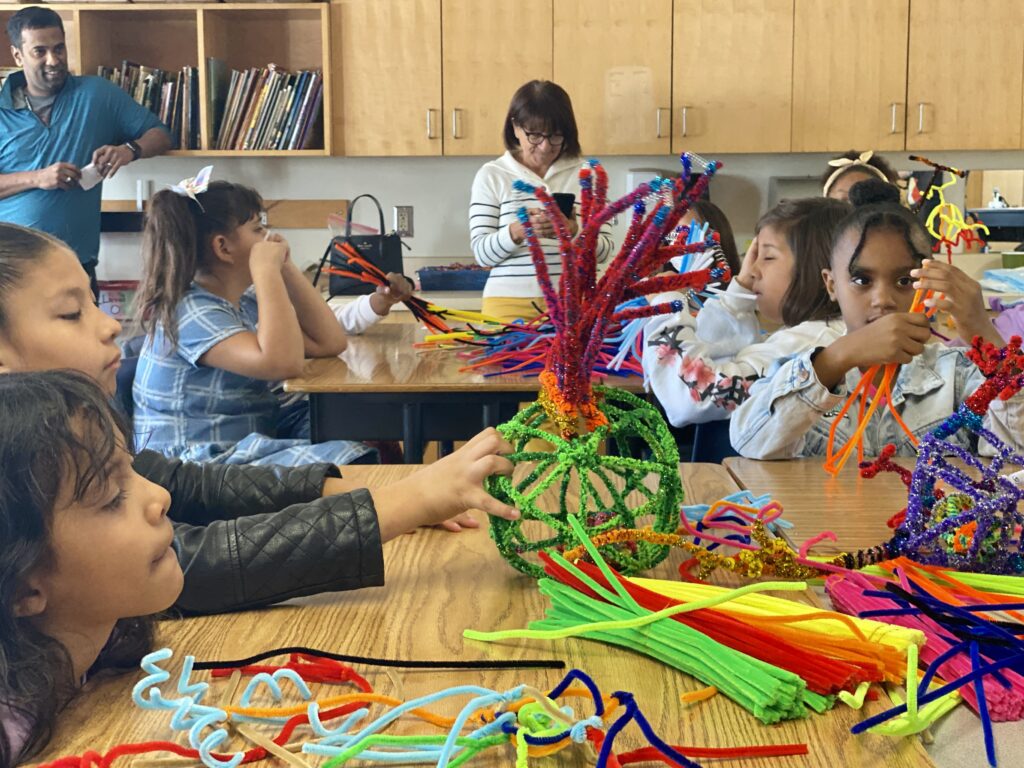
Back to School!
So again, during the 2022 Society for Neuroscience conference in San Diego, we not only presented original posters, caught up with colleagues and walked the cavernous convention halls, but also joyously re-connected with district staff and teachers, and organized two additional days of public outreach and engagement in local schools!
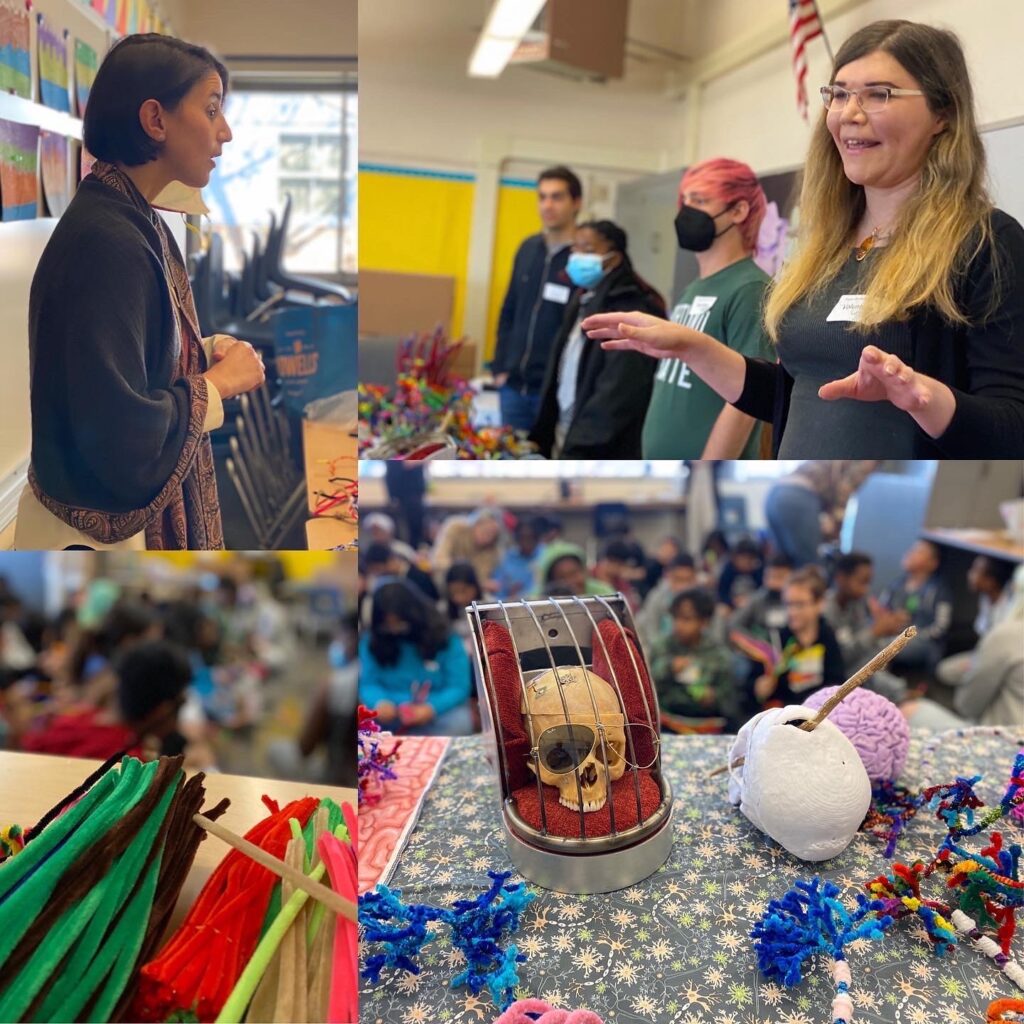
Both San Diego Unified and Northwest Noggin cobbled together the resources to make this happen. And it wouldn’t have happened without support from our collaborators.
We are indebted to the Portland Alcohol Research Center (PARC) at OHSU, which covered our pricey conference registrations and printed posters. Thanks to SfN, we had complimentary registration for our outreach volunteers from Portland State University. School district staff personally drove our volunteers from conference hotels to schools, and served us coffee, snacks and delicious burritos for lunch. The Student Activities and Leadership Program (SALP) at PSU also covered transportation, meals and housing for undergraduate PSU Neuroscience Club participants. THANK YOU!!!
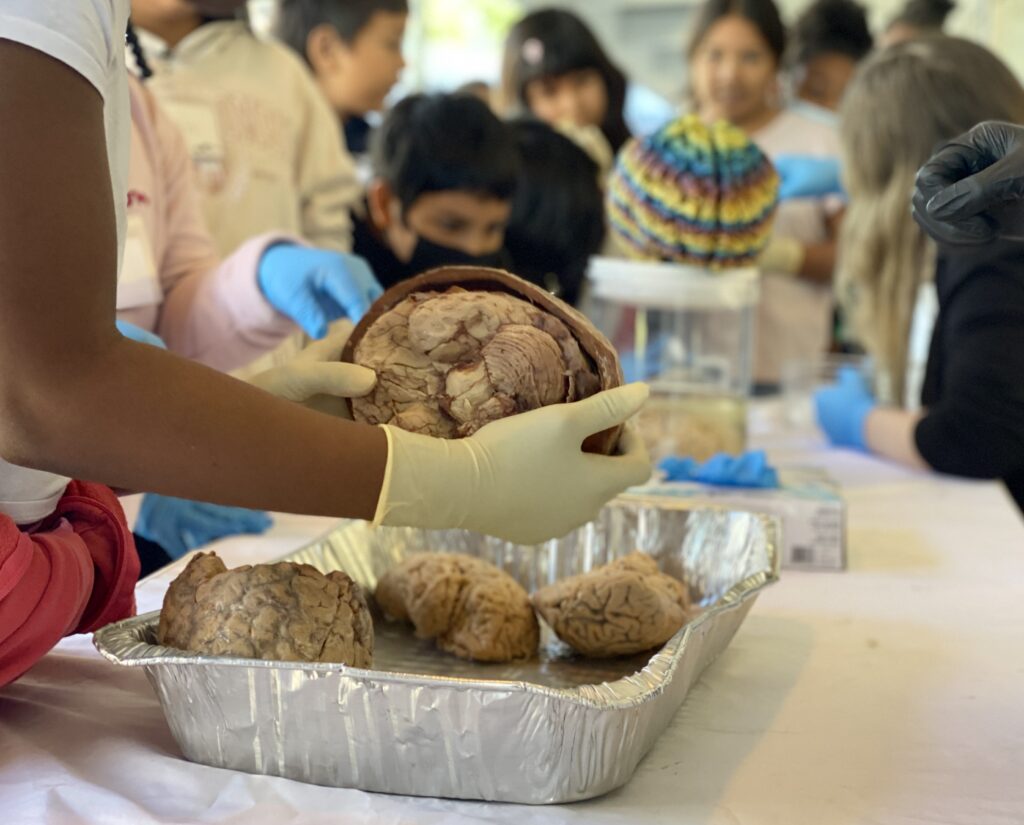
Our own PSU department, Psychology, offered just enough to cover about two thirds of our conference housing costs, while we decided to drive – along with real and 3D printed noggins and pipe cleaner cells – all the way to California from Portland, Oregon, and pay for the gas and meals ourselves.
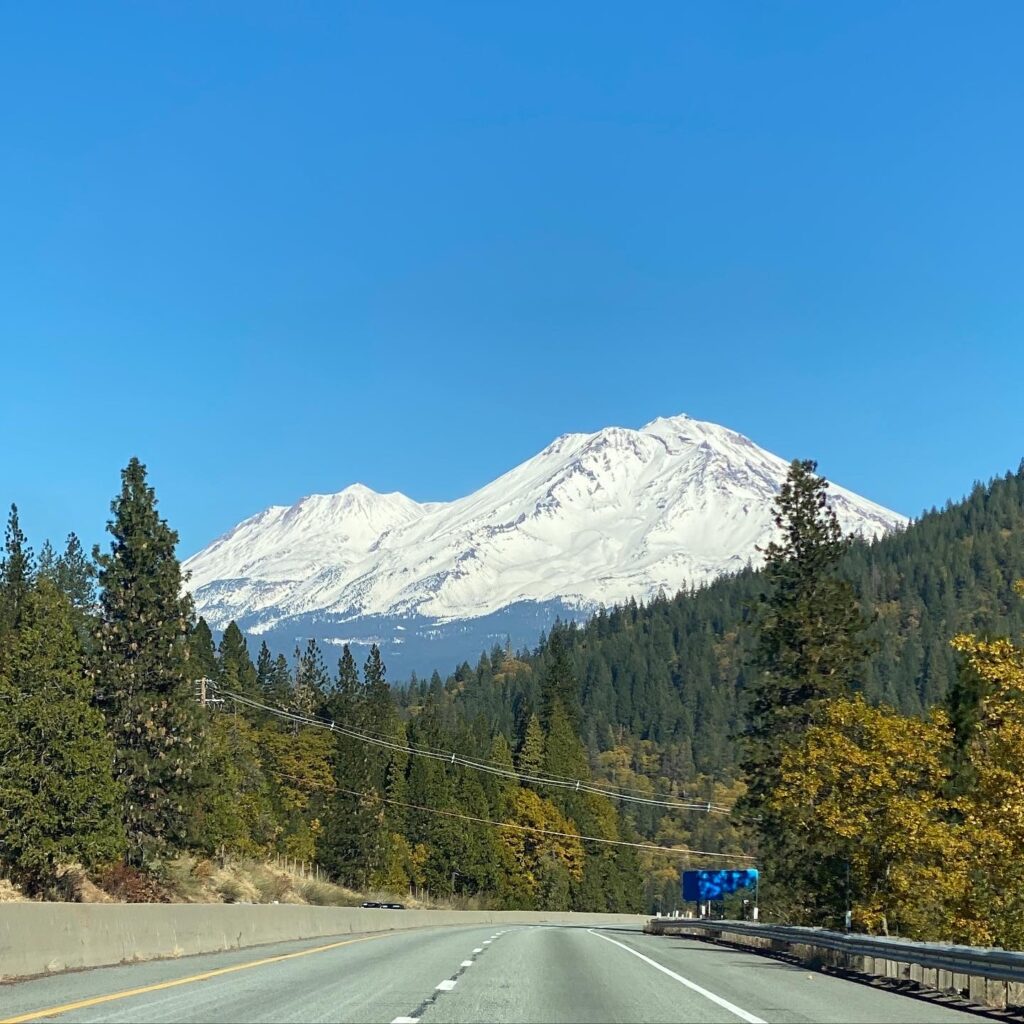
And, as always – it was so worth it!
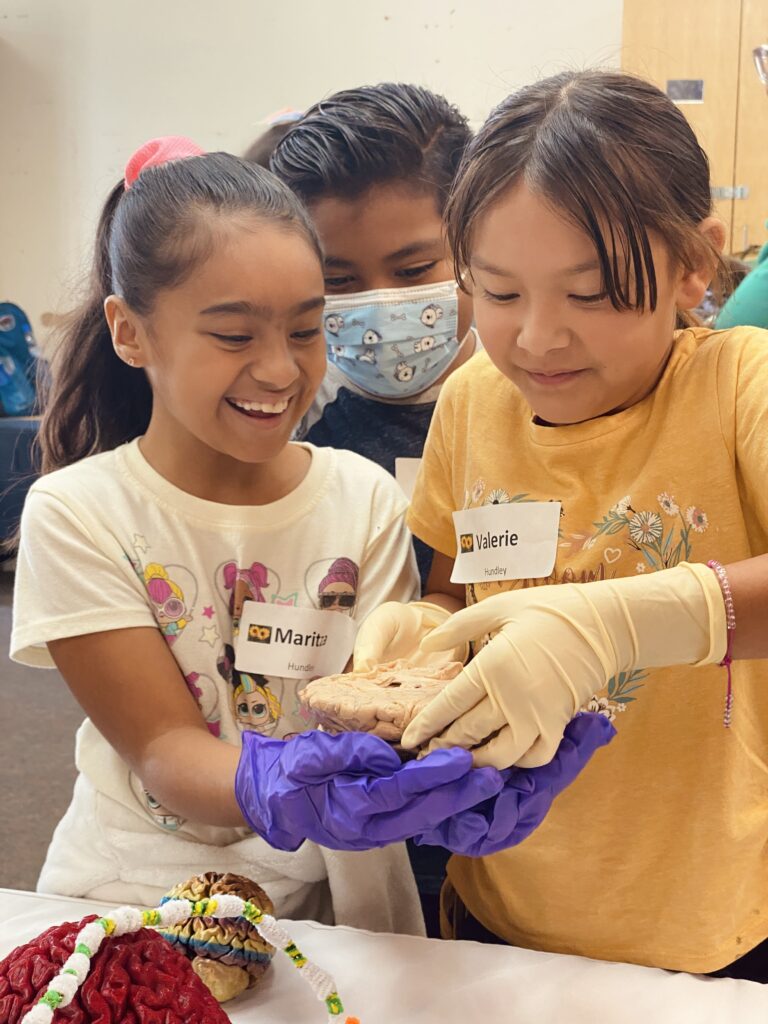
Monday at Webster Elementary
We were joined by some fantastic outreach volunteers attending the SfN conference.
At Webster we welcomed Savanah Gipson and Dan Jang from the PSU Neuroscience Club, along with Bradley Marxmiller from PSU and OHSU, Denesa Lockwood and Kim Engeln from OHSU, and Alfredo Zuniga, a graduate of OHSU who is now faculty at the College of Wooster. We were also honored to share the classroom with Leigh Wilson, the effervescent Public Engagement Manager at the Centre for Developmental Neurobiology at Kings College London whom we recently visited in London Bridge, and Sandeep Kishore, the AAAS Science & Technology Policy Fellow at the NIH BRAIN Initiative!
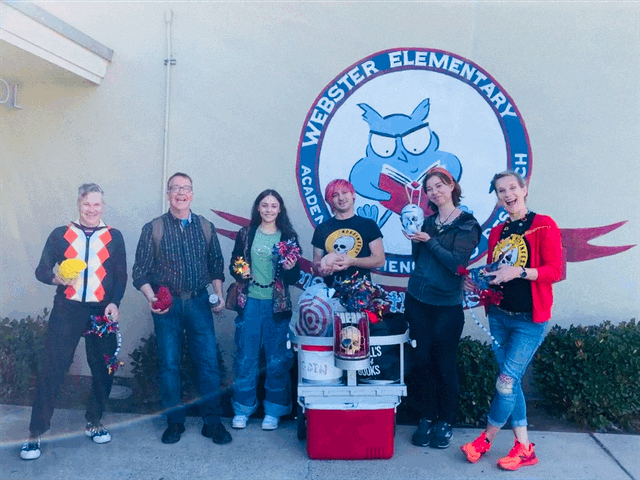
LEARN MORE: What is The BRAIN Initiative?
LEARN MORE: Lobes in LONDON
There were so many great questions!
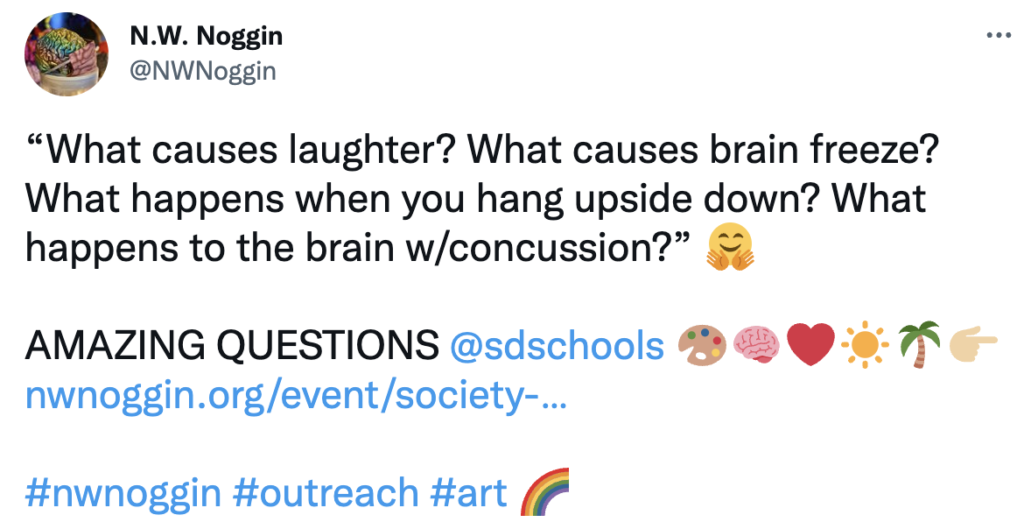
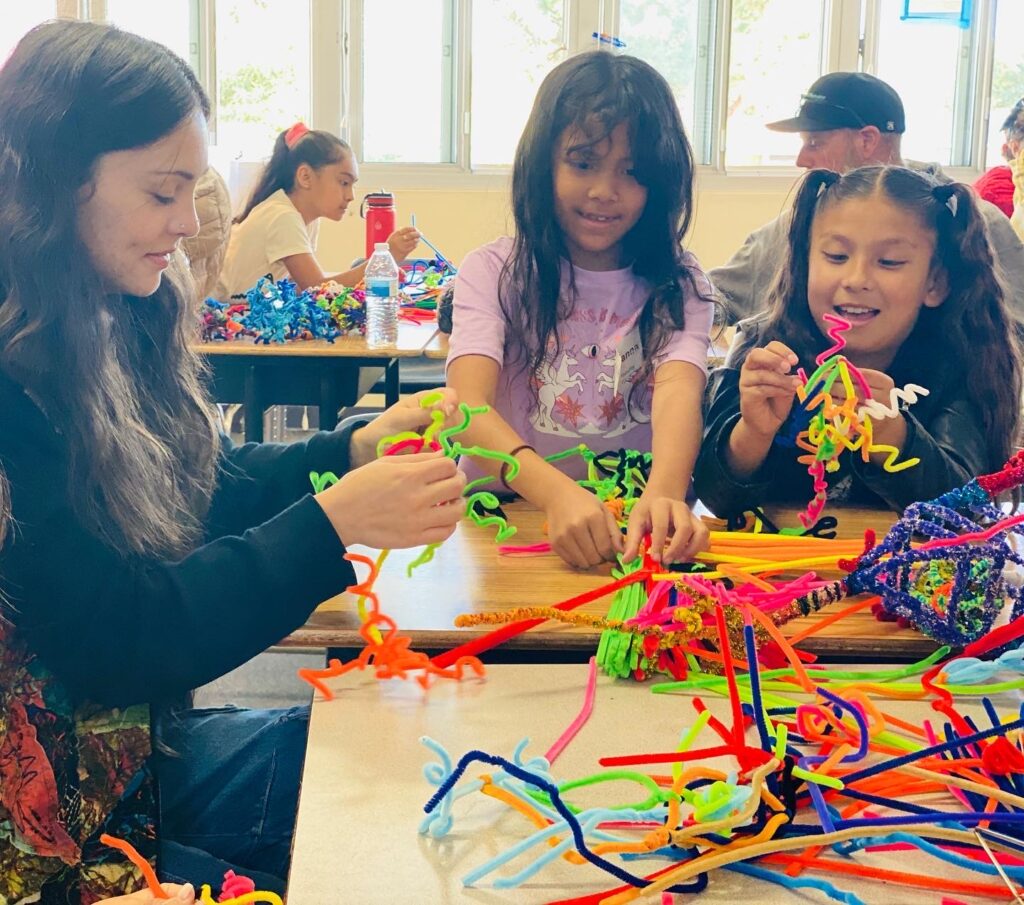
“One of the electrodes implanted in her brain was located within the cingulum bundle and, when that area was stimulated for research purposes, the woman experienced an uncontrollable urge to laugh. Not only was the woman given to smiles and giggles, she also reported feeling relaxed and calm.”
— Cingulum stimulation enhances positive affect and anxiolysis to facilitate awake craniotomy

LEARN MORE: The cingulum bundle: Anatomy, function, and dysfunction
LEARN MORE: Discovering a Source of Laughter in the Brain
LEARN MORE: Why do we get brain freezes?
LEARN MORE: Ice Cream Headache (scroll through pdf to find the article)
LEARN MORE: The effect of face inversion on activity in human neural systems for face and object perception
LEARN MORE: Orientation-sensitivity to facial features explains the Thatcher illusion
LEARN MORE: Caring for Concussions (NIH)
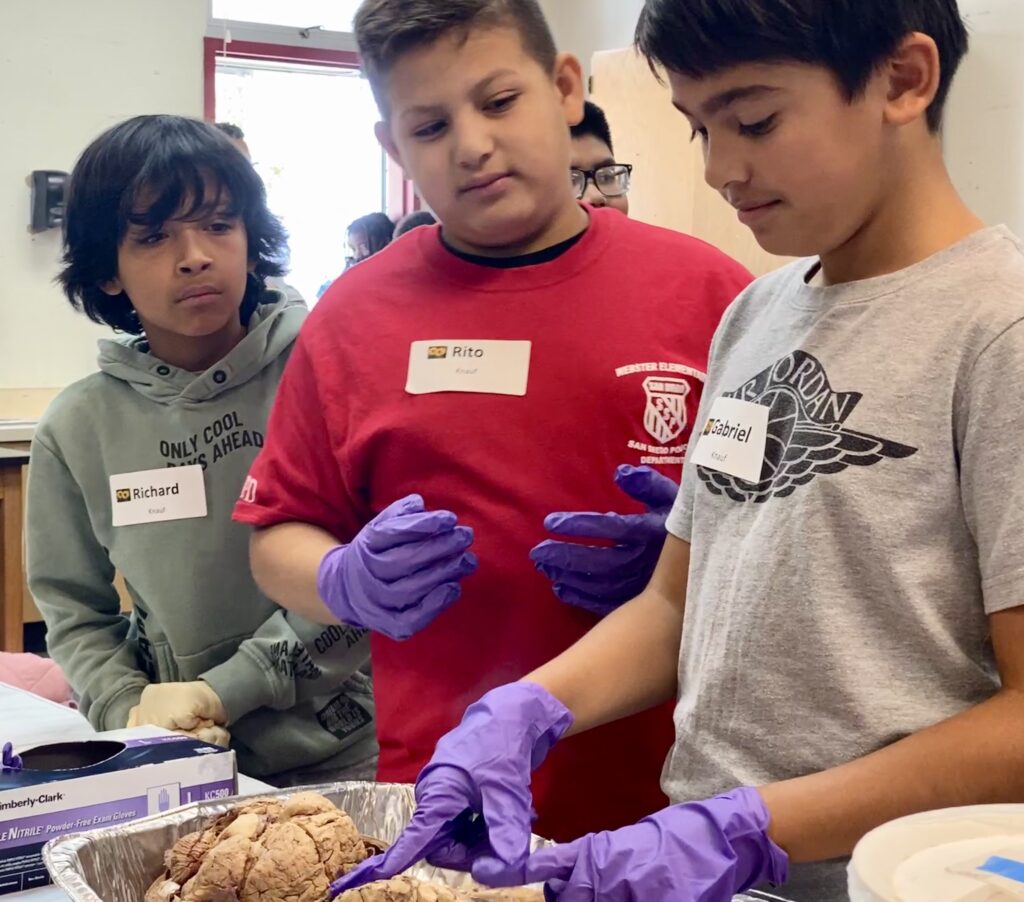
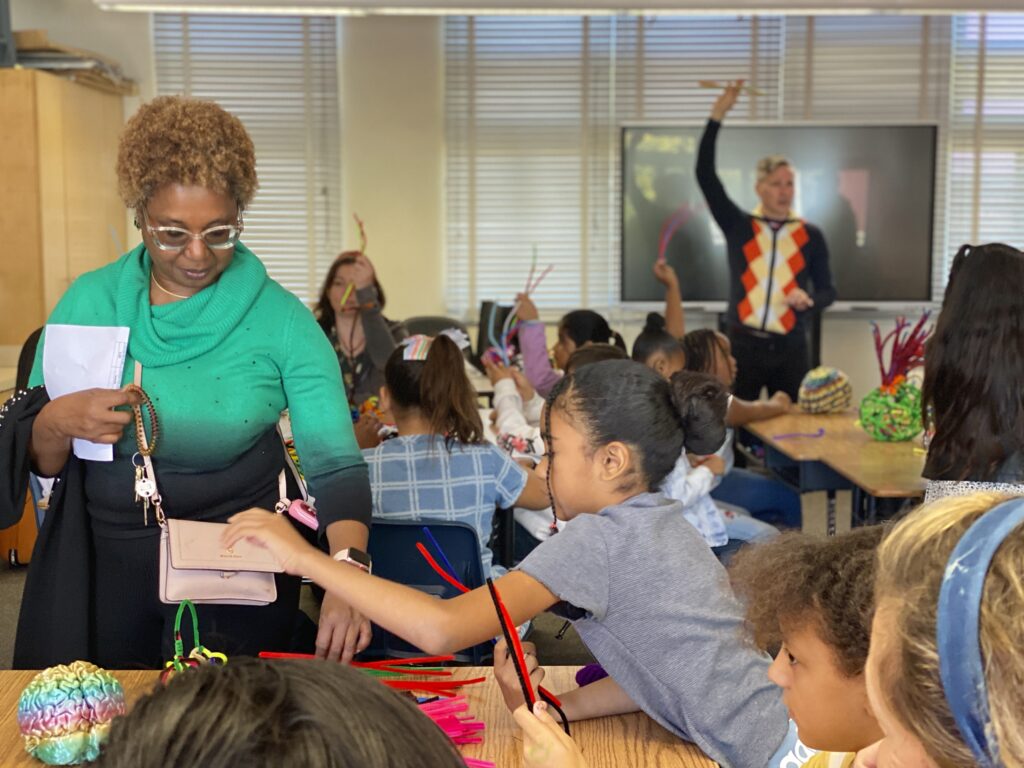
Making connections

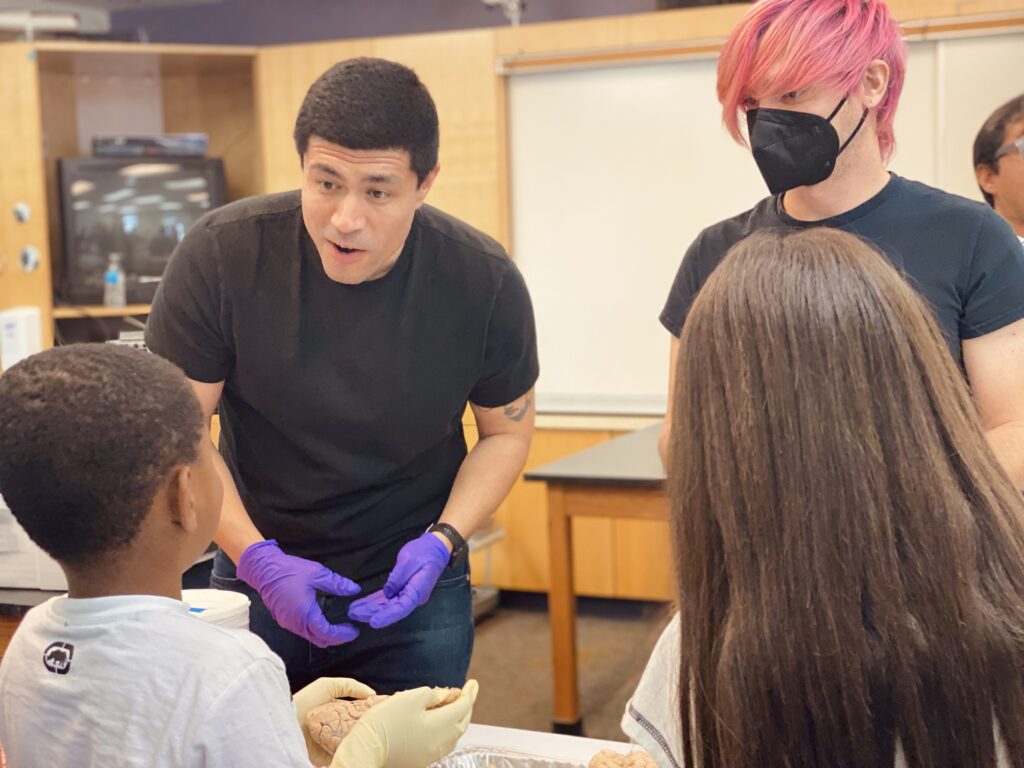




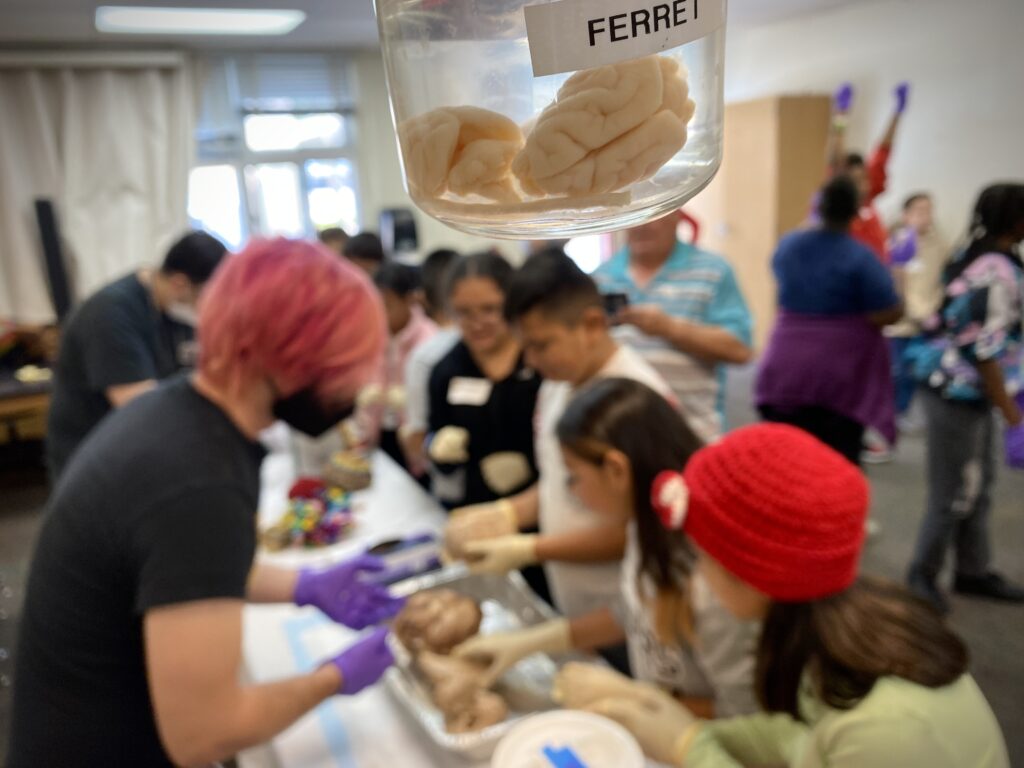


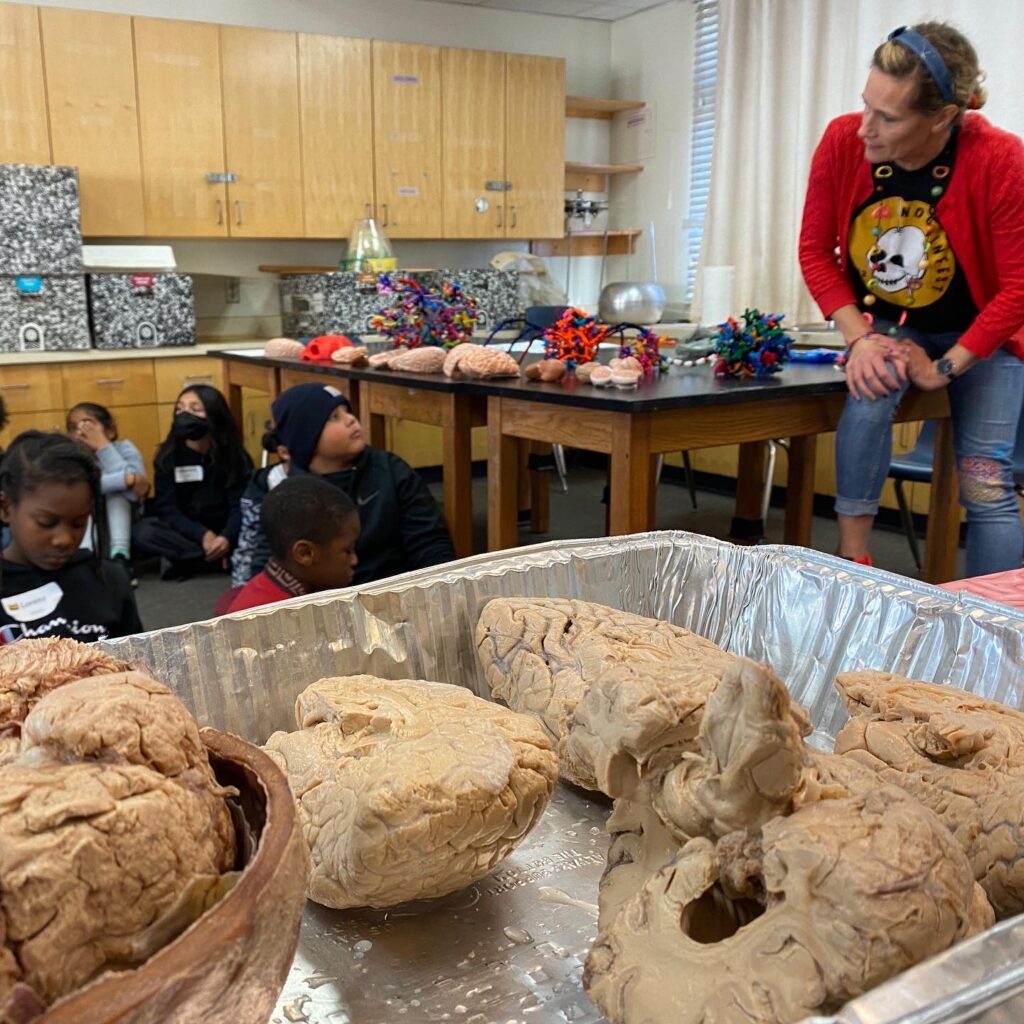
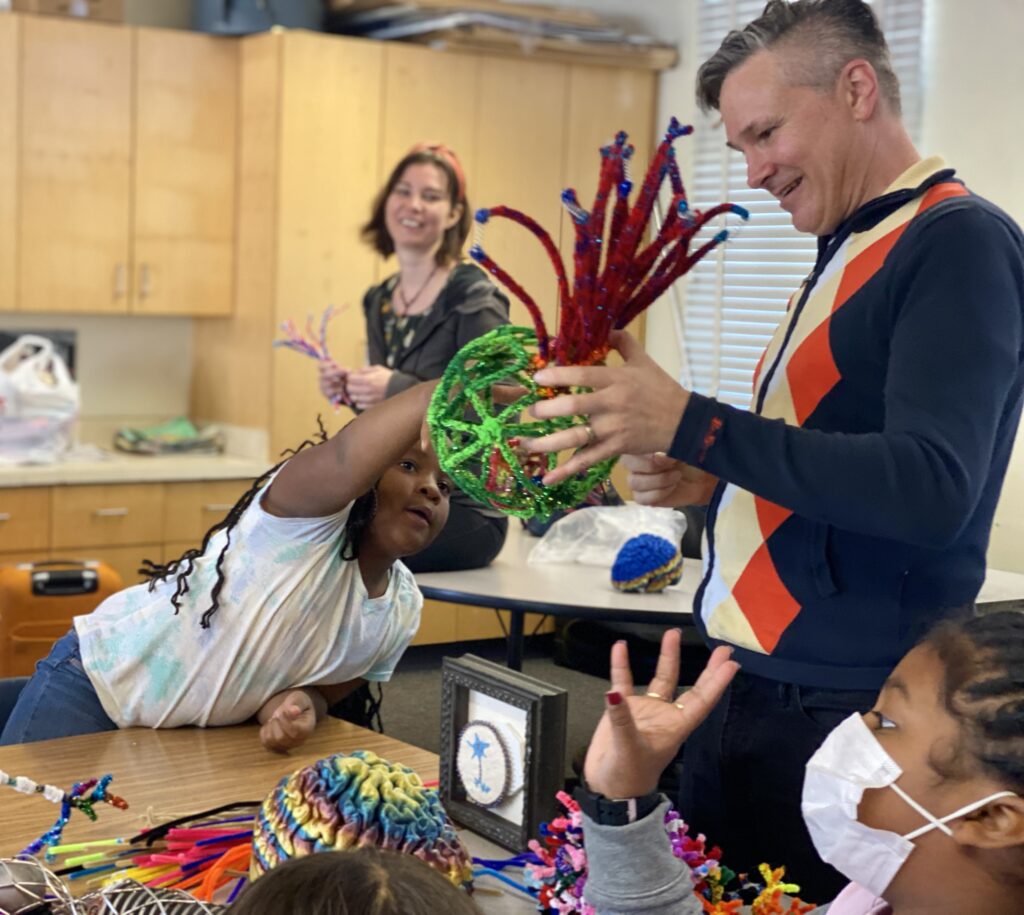

Tuesday at Freese Elementary
The next day we ventured back onto multiple freeways for a lively morning at Freese!

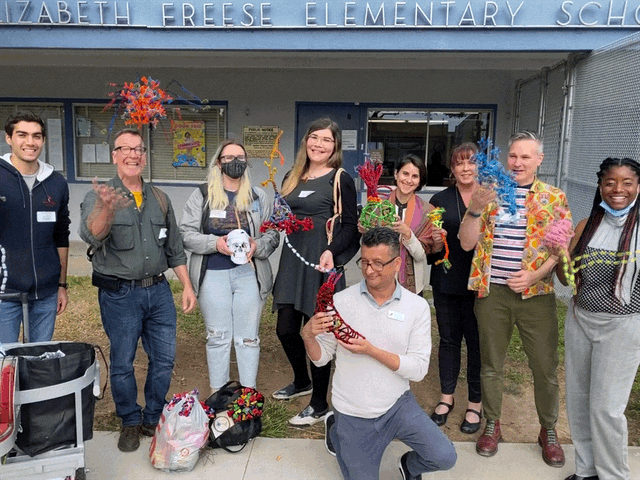
Tonia Bautista joined us from the PSU Neuroscience Club, along with Egemen Tangun from the University of San Diego, Sophia Weber and Denesa Lockwood from OHSU, Morgan Wirthlin from the Allen Institute, Anita Randolph from the University of Minnesota, Bradley Marxmiller from PSU and OHSU, and Yasmin Kloth, the Chief of Communications and Outreach at the NIH BRAIN Initiative!
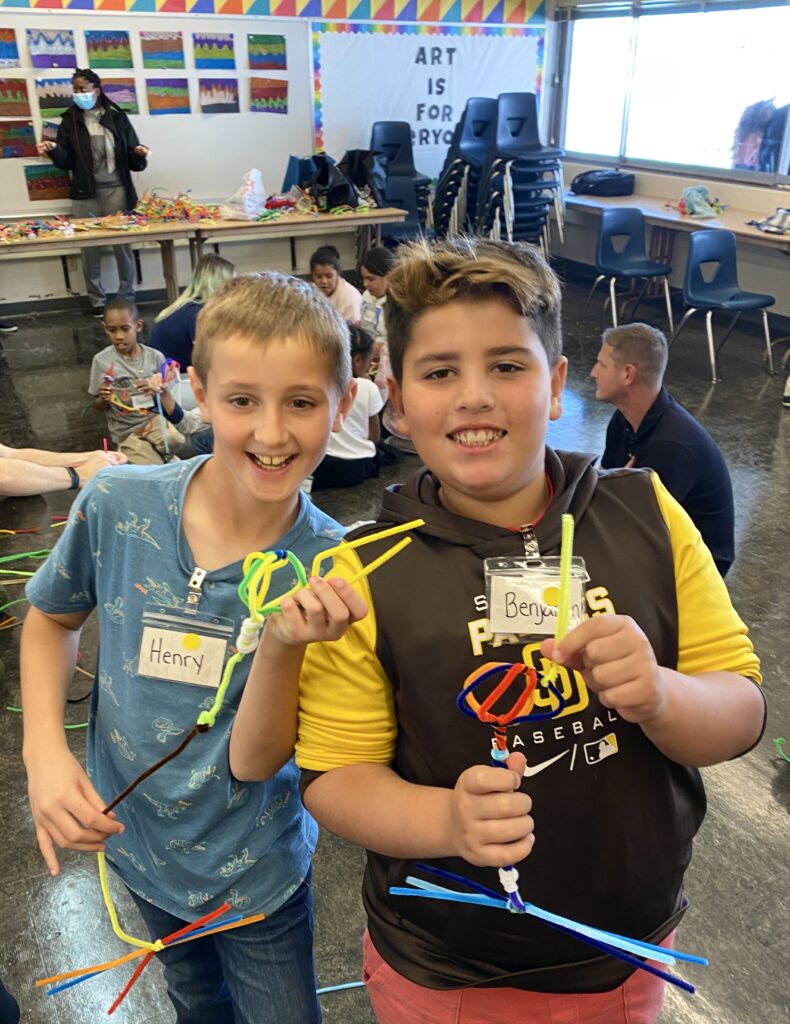
More questions!
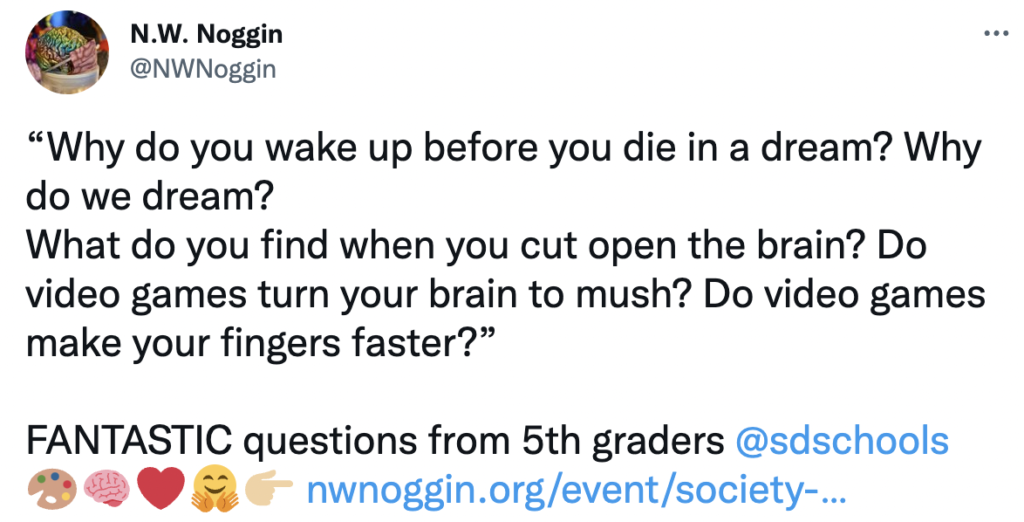
“Is it a little shocking or surprising to die – actually die – in a dream?” we asked.
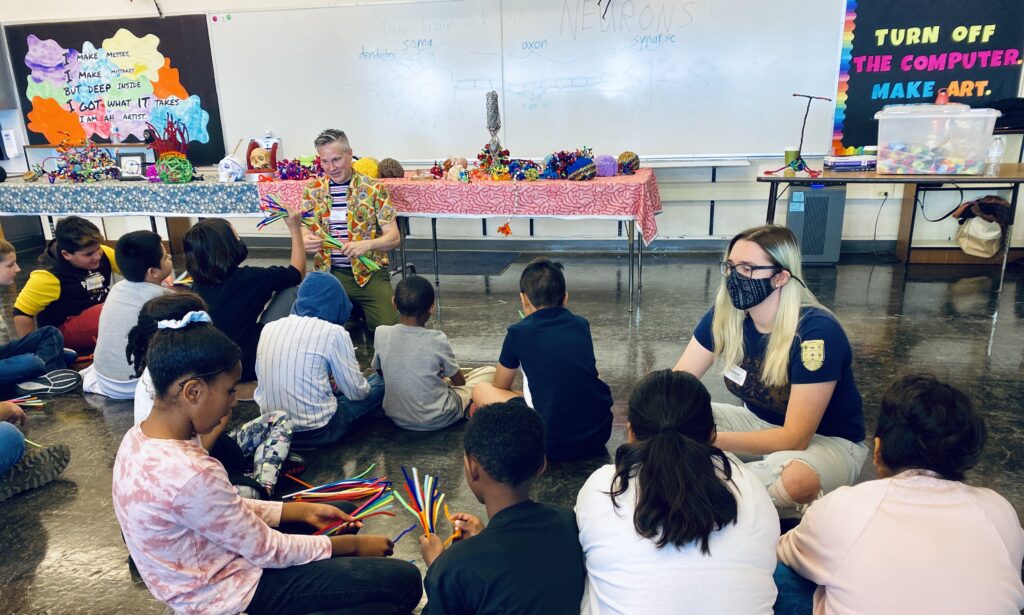
“YES!!”
High intensity or surprising and unusual (novel) experiences can provoke specific activity in our brains, in a set of deep structures that are known collectively as the reticular activating system, or RAS. The RAS can wake you up!
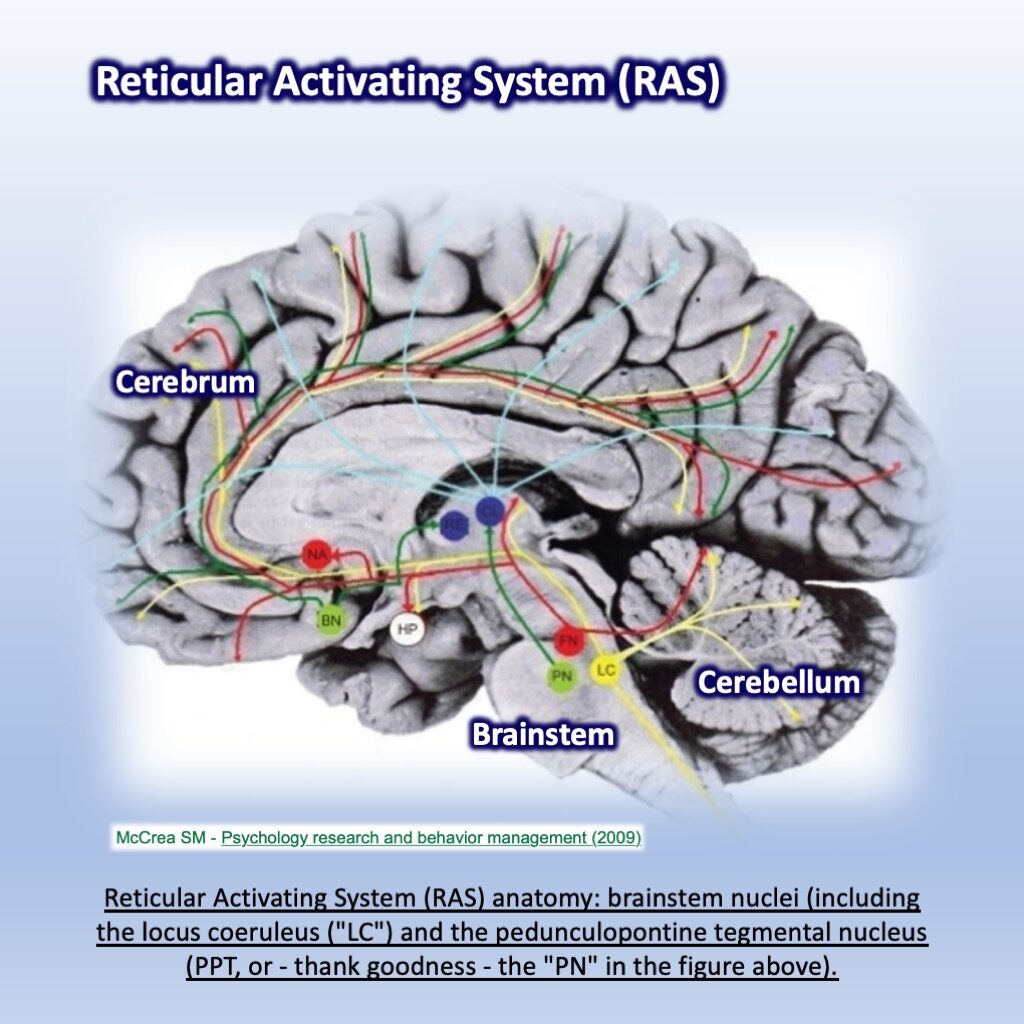
We’ve actually been exploring this particular set of subcortical brainstem nuclei in our undergraduate classes at Portland State University! The word nucleus can refer to the site of chromosomes inside a single cell (like a neuron), but it can also refer to a clump of gray matter, which consists of many neuron cell bodies, along with their branch-like dendrites and synaptic connections. The RAS nuclei are found in our brainstem, and send their reticulating (or “net-like”) axons into our cerebrum where they release a host of important modulatory neurotransmitters.
These RAS neurotransmitters are called “modulatory” because they help adjust (or modulate) our level of alertness and arousal – in other words, how awake you are!
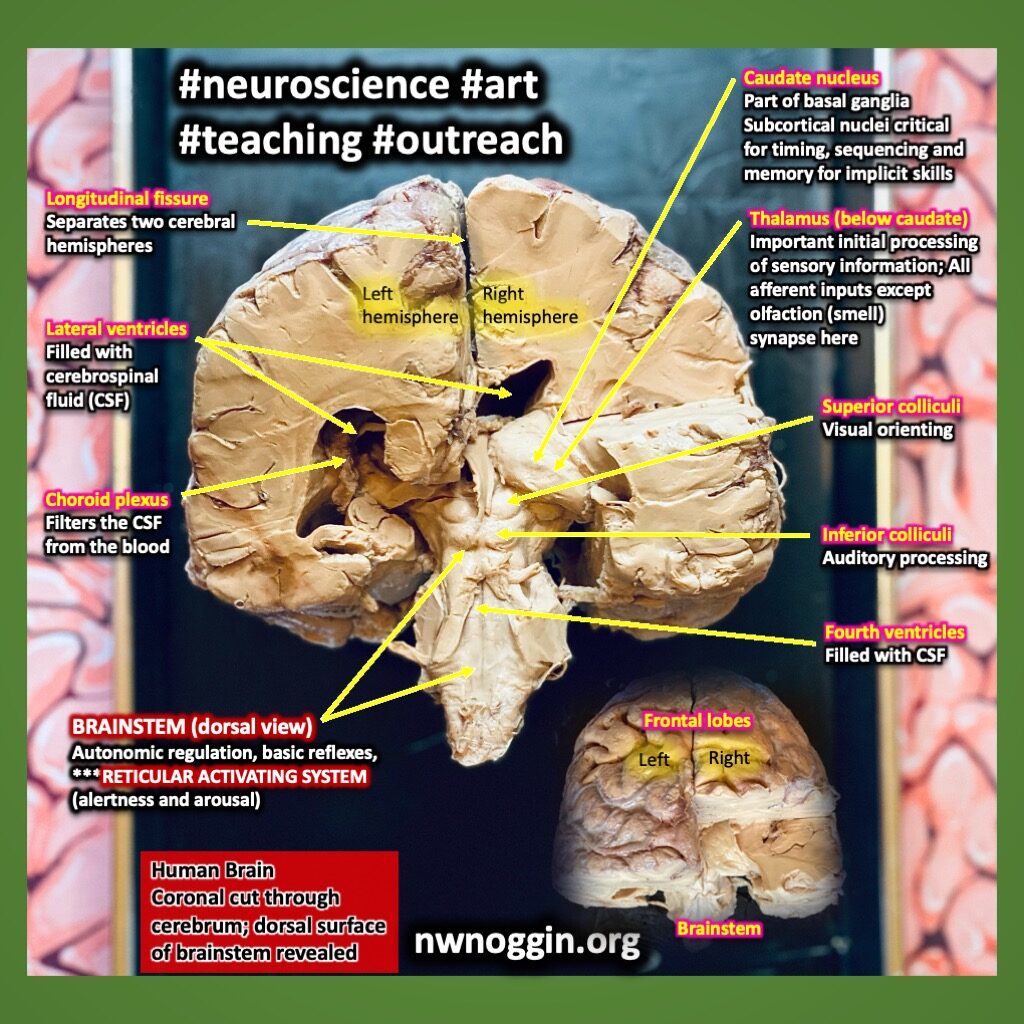
When you are awake and engaged, your RAS is ON, releasing LOTS of a modulatory neurotransmitter called norepinephrine from a brainstem nucleus called the “blue spot” (or locus coeruleus). The RAS also releases neurotransmitters called dopamine, serotonin and acetylcholine, activating neurons all around your brain. These neurotransmitters wake up brain networks involved in memory, decision making and attention.

In contrast, when you get drowsy, your RAS activity is dropping.
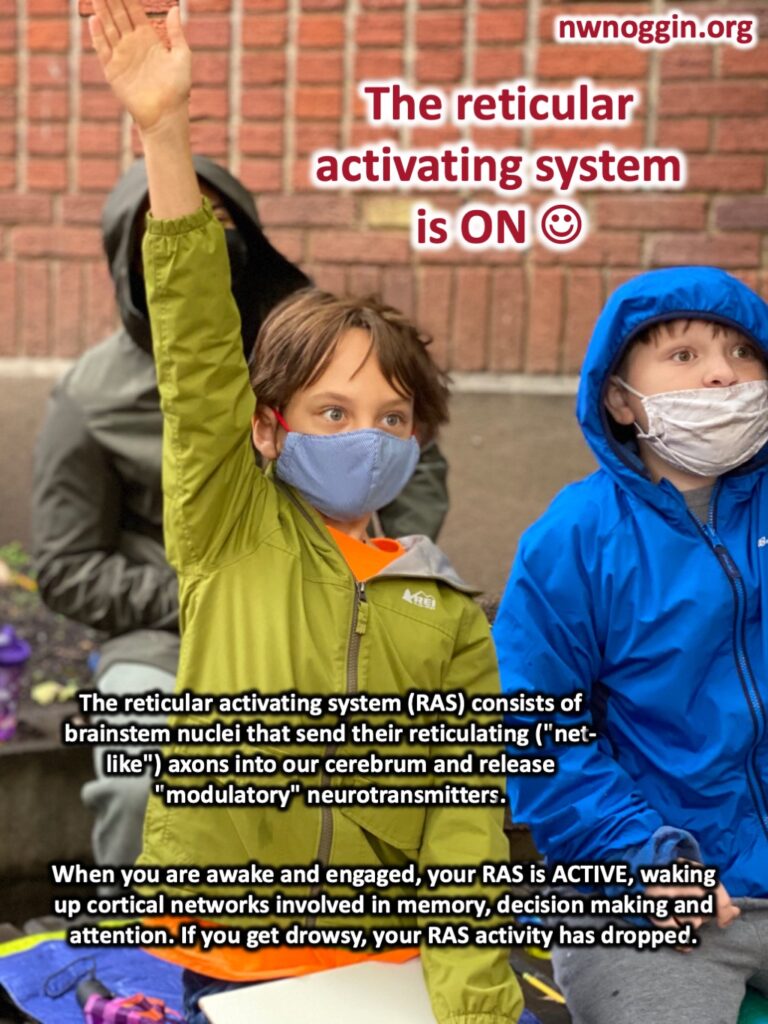
Dying in a dream is unusual, and alerting, and a burst of RAS activity (including activity in the locus coeruleus, the “blue spot” nucleus in your brainstem), could jolt you awake!
LEARN MORE: Reticular Activating System
LEARN MORE: The Functional Anatomy of the Reticular Formation (the RAS is part of a broader collection of subcortical nuclei and both ascending and descending axon pathways known as the reticular formation)
LEARN MORE: Meditation and Yoga can Modulate Brain Mechanisms that affect Behavior and Anxiety
LEARN MORE: The beneficial effects of meditation: contribution of the anterior cingulate and locus coeruleus
LEARN MORE: Video games don’t cause violence
More brains, art and future neuroscientists!
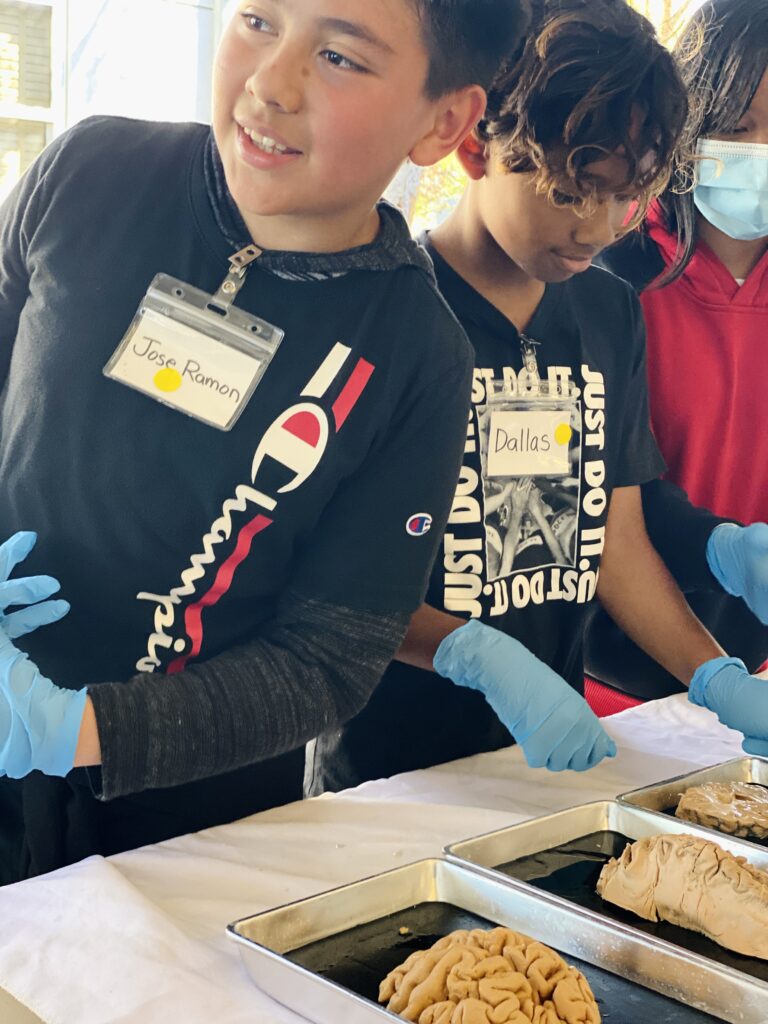
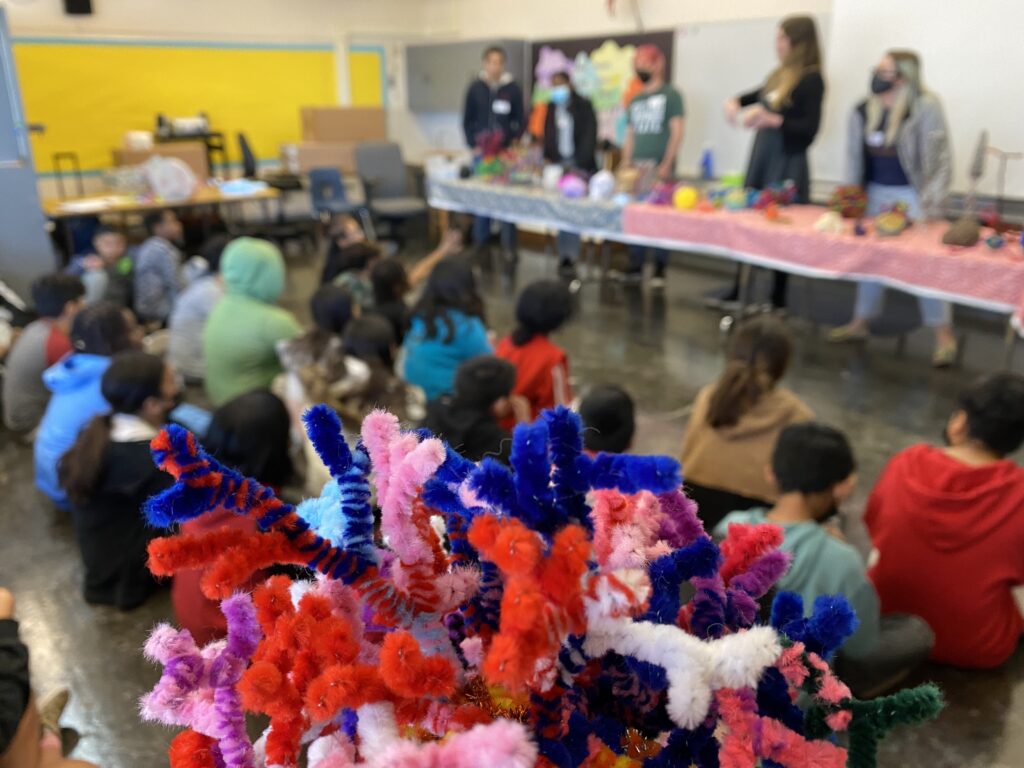
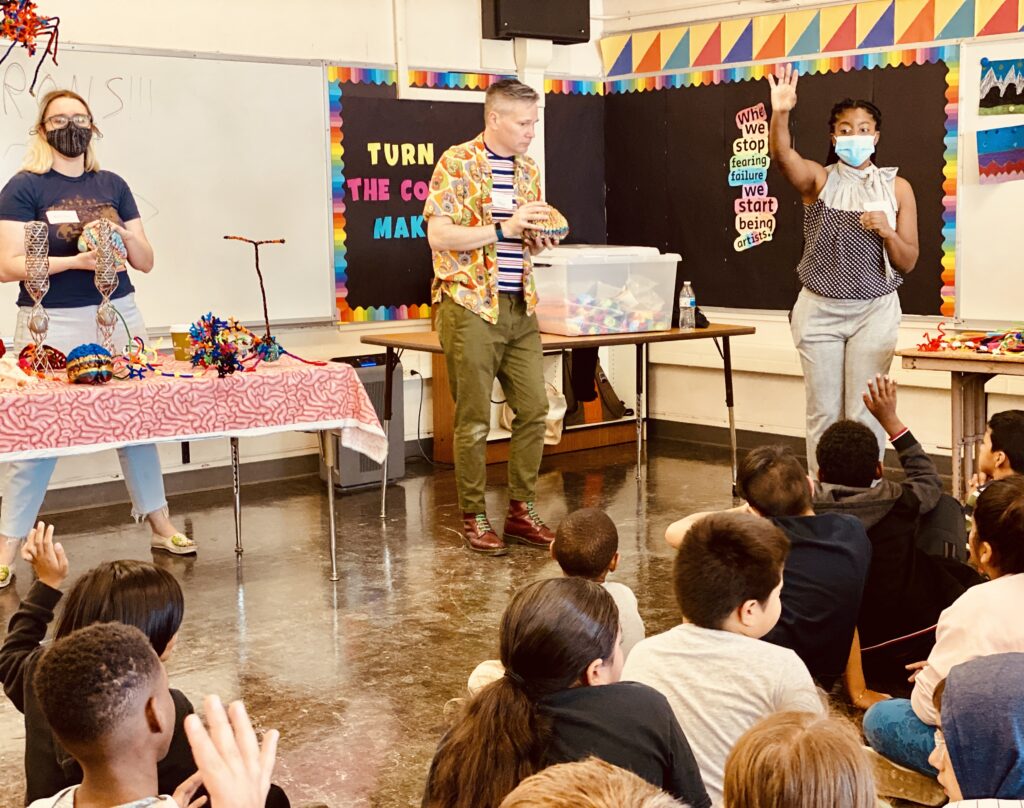


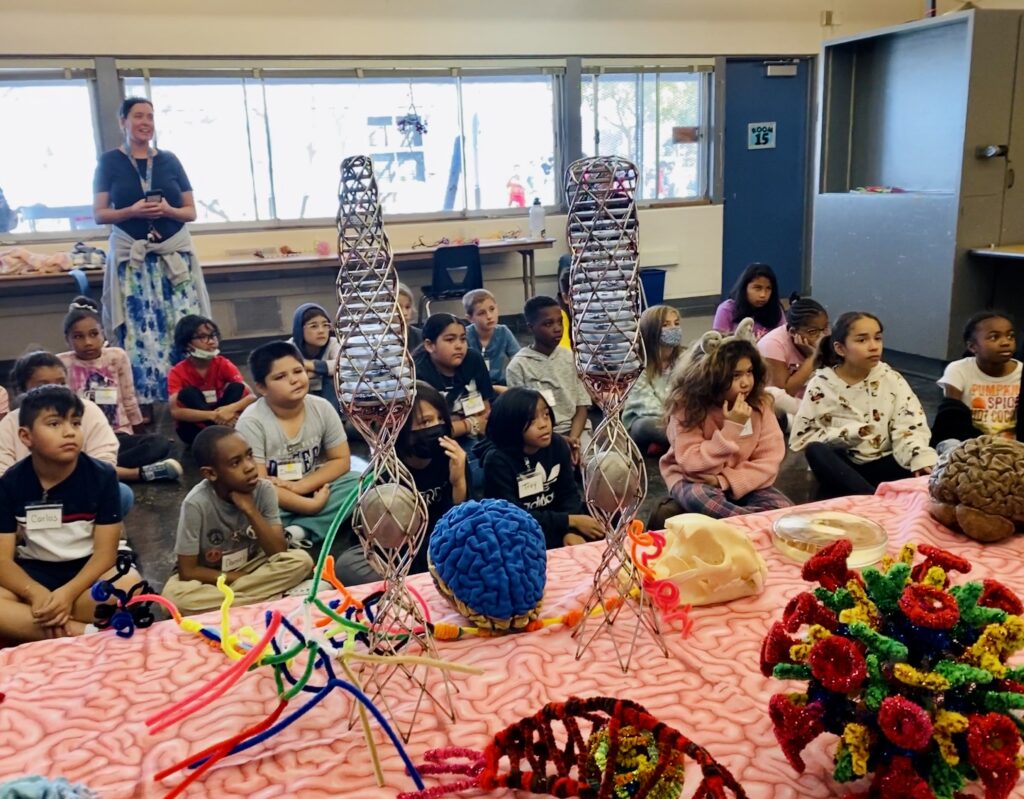
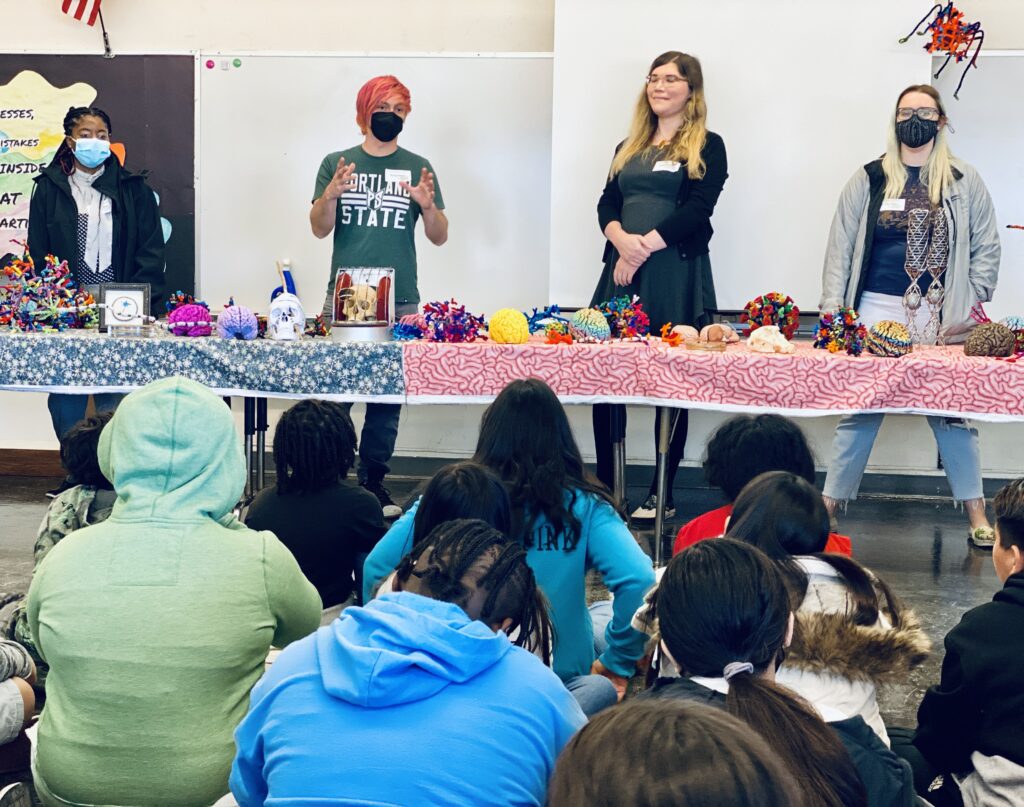
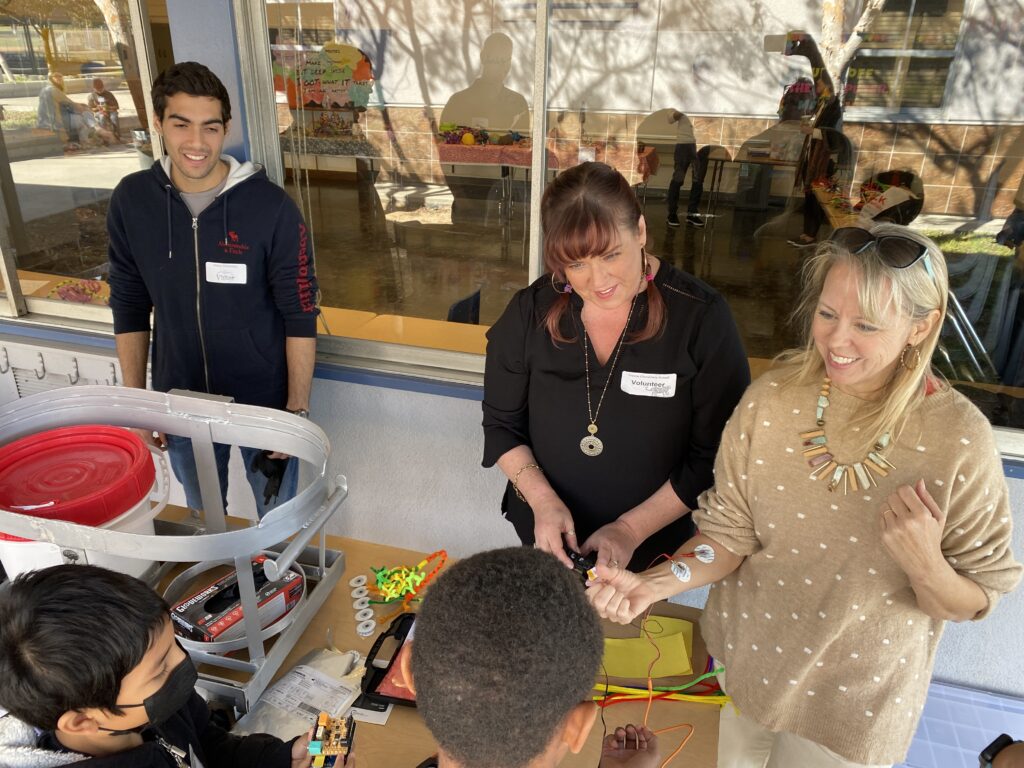
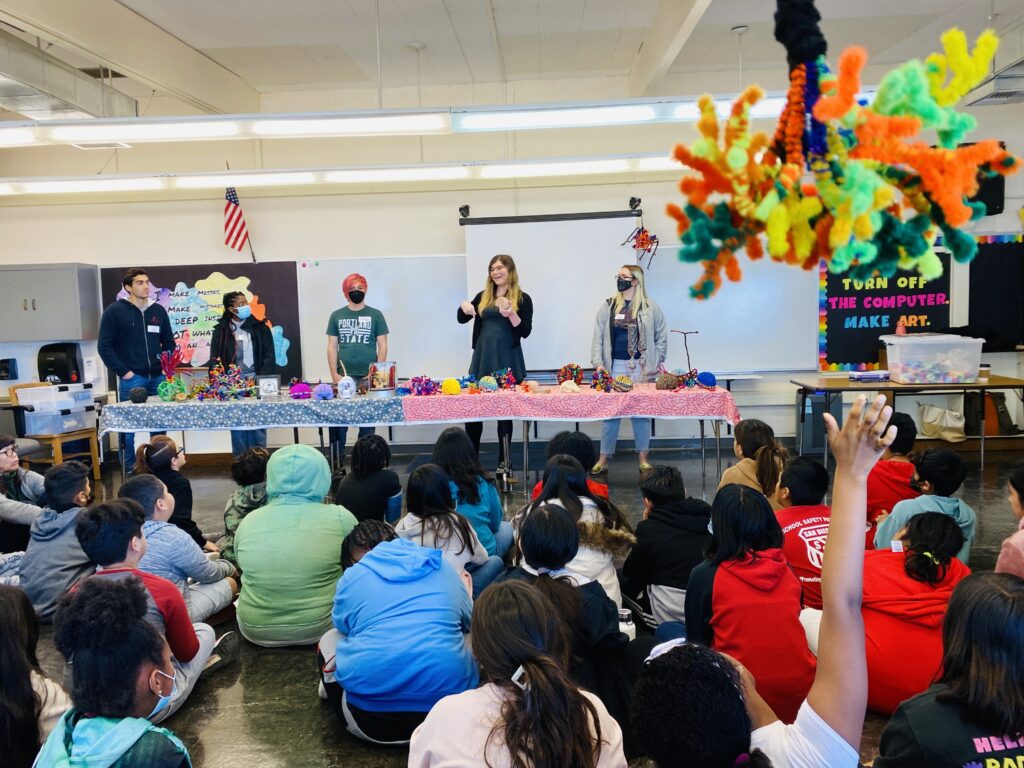

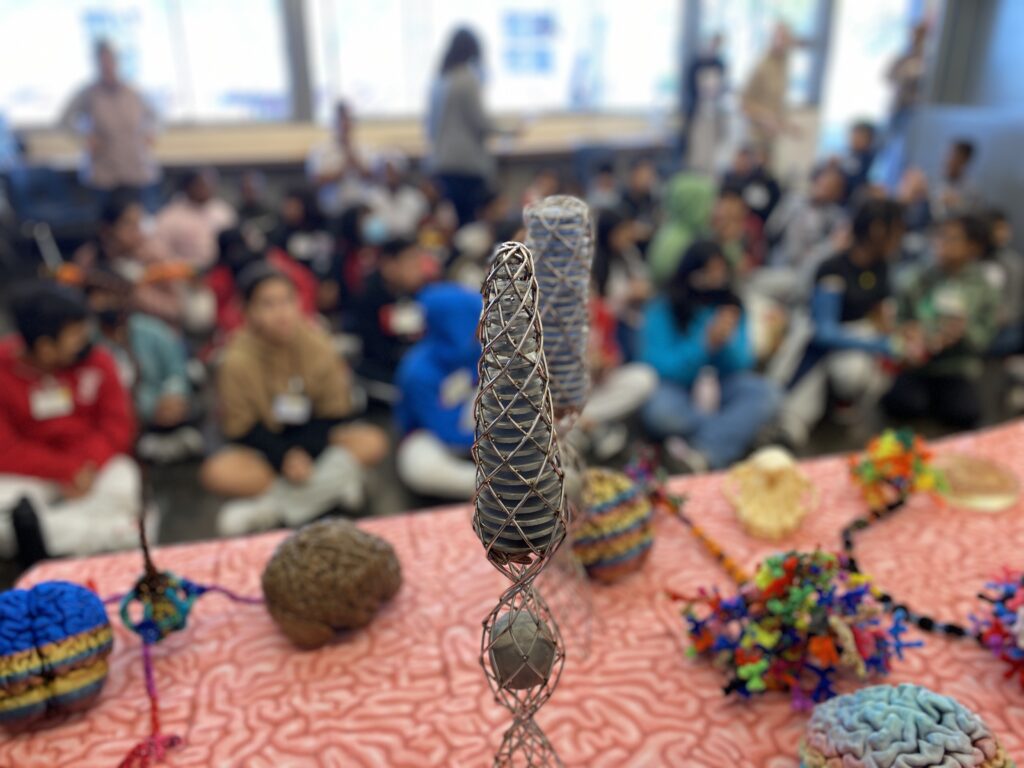
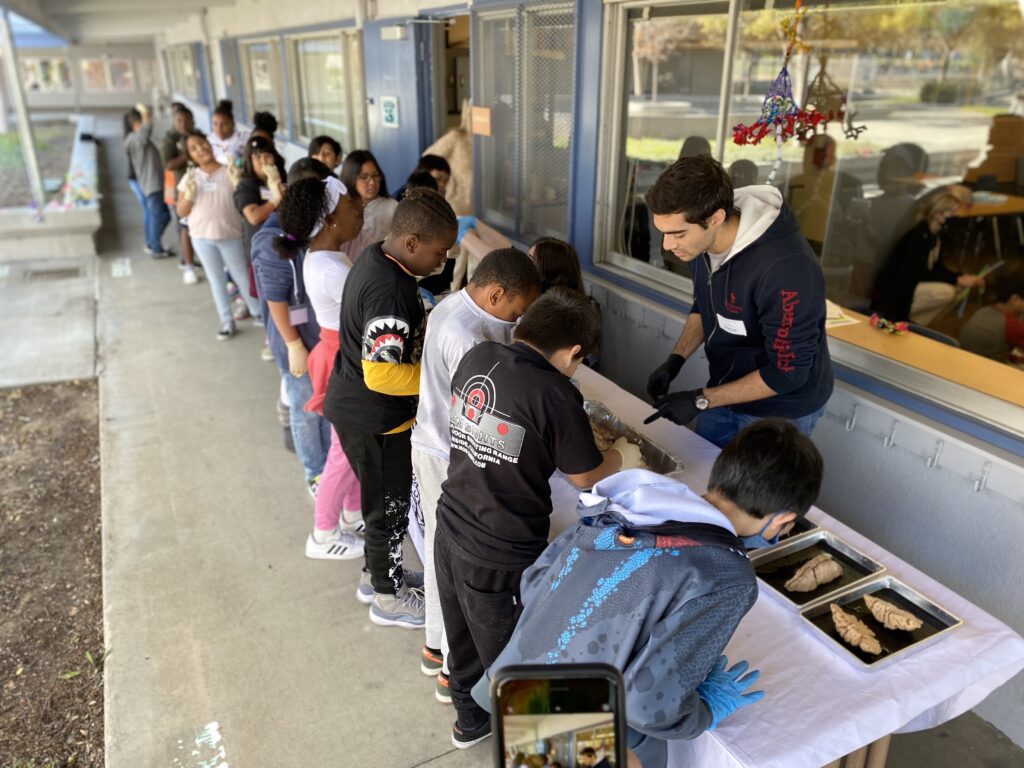

“What struck me the most about the half day with the students at Freese Elementary was their insatiable curiosity. Almost from the moment they came into the room, their hands were up with questions—questions about how our brains work when we dream, what happens when we hallucinate, how do you study the brain, what does a headache do to the brain. Tough questions and also fearless questions. Questions that blended into the art portion of the experience—where students had a chance to create neurons from pipe cleaners. What this type of outreach at the elementary school level taught me—and the skill with which Bill, Jeff, and their volunteers brought to a room full of open minds—is the importance of sparking joy in science, and in art, at an early age, because there’s the potential for that spark to grow into a flame and stay with them for the rest of their lives.”
— Yasmin Kloth, NIH BRAIN Institute

Huge thanks to Roberto Corona, Maria Nichols and Charlotte Esquivel from San Diego Unified Public Schools!! And thank you thank you NW Noggin outreach volunteers for going places to listen, learn and share your own stories from classrooms and labs!
